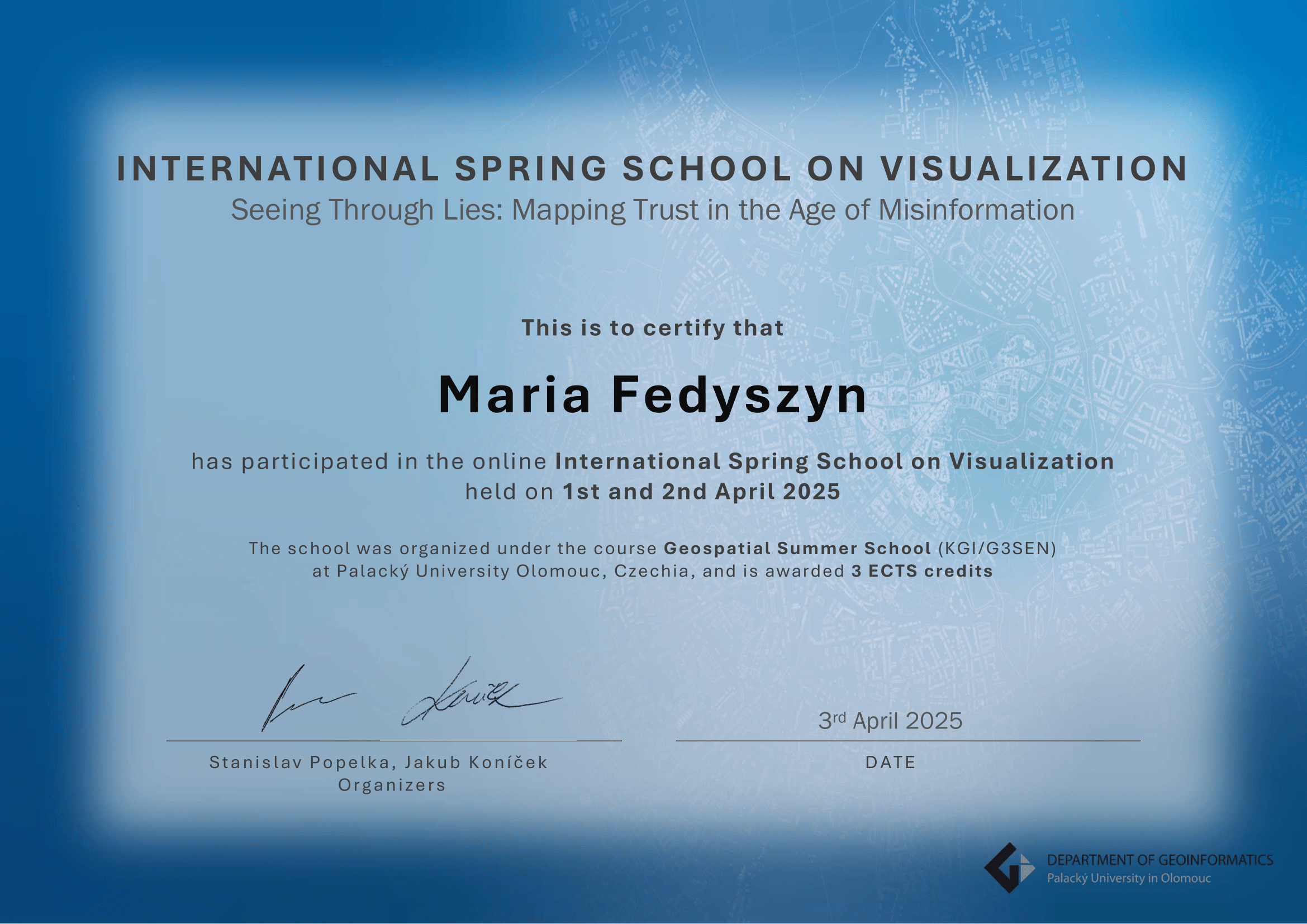Report on the International Spring School on Visualisation (ISSonVIS) 2025. Seeing Through Lies: Mapping Trust in the Age of Misinformation
April 14, 2025

At the start of April, I attended the International Spring School on Visualization 2025 (ISSonVis), held online by Palacký University Olomouc on April 1–2, which brought together a diverse panel of experts to explore visualization’s role in combating misinformation. The Spring School had the theme “Seeing Through Lies: Mapping Trust in the Age of Misinformation.” The two-day event featured keynote lectures, workshops, and hands-on sessions from leading figures in cartography, psychology, AI, and political science, and explored the challenges which misinformation can create.
Day 1
The first day opened with a keynote from Georg Gartner (TU Wien and current president of the International Cartographic Association), who spoke on trust in cartography and the ethical responsibilities of mapmakers. This was followed by Nili Steinfeld (Ariel University), who discussed how digital literacy and visual behavior intersect when users encounter misleading online content, explored through the use of eye-tracking. Jakub Lysek then shifted the focus onto political data, demonstrating how cartographic manipulation can alter perceptions of electoral outcomes. Ian Muehlenhaus introduced the concept of “pulp cartography,” examining how popular visual narratives shape public understanding Petra Hyšová then discussed the psychological influence of how personality traits influence visual attention during deception, using eye-tracking techniques. To finish day 1, Timothy Prestby examined how interface design affects user trust and decision-making, and how maps can be made to deceive.
Day 2
On the second day, Eric Losang began by offering a discussion on atlas design and critical cartography, questioning the politics embedded in spatial representation. Eric was joined by Francis Harvey, who offered a broader reflection, specifically on the ethics of collaboration in digital cartography, advocating for more socially responsive design frameworks. Gabriela Godišková presented research on the influence of immersive technologies on users’ trust in visualizations, especially in VR environments. Following this, Alena Vondráková led a practical session, where common mistakes in map design were shown, and how to make better, more appealing maps instead. Róbert Móro explored how AI and user modeling can detect misinformation, particularly through behavioral signals like gaze patterns. The program concluded with a guided practical, where we were split into smaller breakout groups to critically analyse given examples and ways in which we would improve them.
My final thoughts on the experience
The programme for both days was packed with a range of concepts relating to misinformation and maps, and presented research topics which I may not have come across otherwise. It was eye-opening to see how geovisualisation is so transdisciplinary across design, data, and digital ethics. For myself as an individual planning to work in this field, this is a Spring School acted as a godo reminder that how I present visual information will influence how the audience perceives the information, and this is something which should always be on my mind.